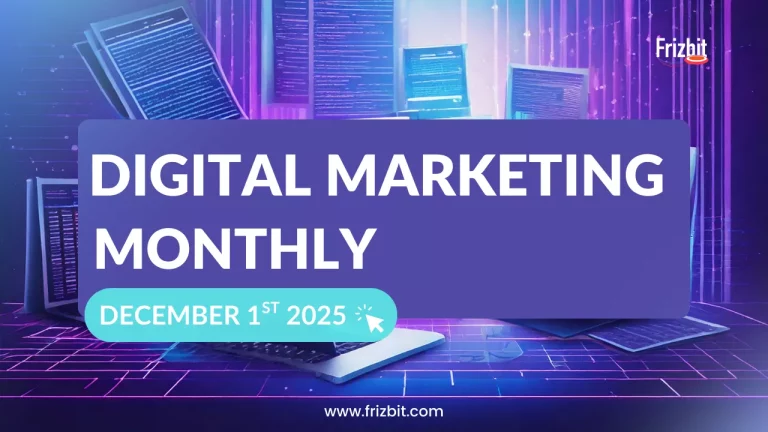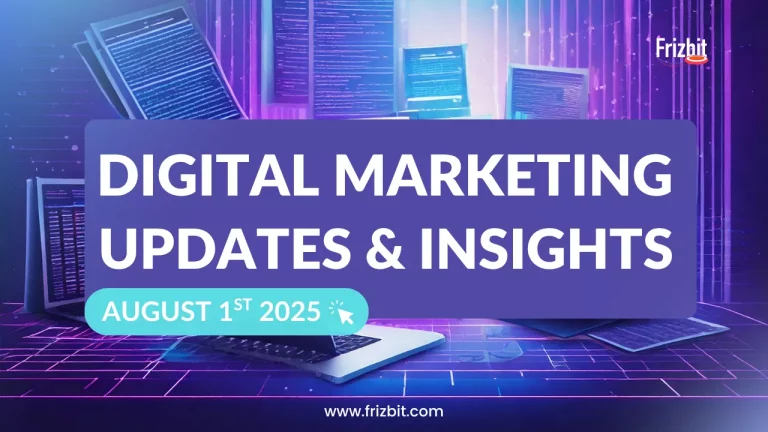Welcome to the October edition of our monthly Digital Marketing Updates! 💌
As the autumn rain finally gives way to clearer skies here in Barcelona today, October left us with some of the most significant shifts in digital marketing infrastructure I’ve seen in years. While the weather transitions from drizzle to sunshine, the marketing landscape is experiencing its own transformation—from Google abandoning its six-year Privacy Sandbox initiative to Meta mining conversational AI for targeting gold, and every major platform racing to embed agentic AI into their core offerings.
This month was a masterclass in strategic pivots and AI acceleration. We saw regulatory frameworks emerging (California’s chatbot law, Italy’s AI legislation), platform consolidations (Salesforce-Regrello, Getty-Perplexity), and the continued ascent of AI search as a legitimate competitor to traditional SEO. The message is clear: the shift from traditional automation to autonomous AI agents isn’t coming—it’s here.
📩 Let’s dive into what actually matters from October 2025!
1️⃣ Search Marketing Updates
Google Retires Privacy Sandbox After 6 Years
What Happened: Google officially abandoned its six-year Privacy Sandbox initiative on October 17, 2025, deprecating 10 APIs including Topics, Protected Audience, and Attribution Reporting due to low adoption. Chrome will maintain current third-party cookie controls with user choice, fundamentally reversing the industry’s planned shift to privacy-preserving alternatives.
💡 Why it matters: As a founder of a marketing automation solution using only first-party data, we prepared for years for the day the day that 3rd-party cookies were going to be officially removed from Google Chrome, as Google has communicated previously that. Then it was postponed year after year. After years of anxiety and preparation, Google just hit the reset button on the cookie apocalypse. This isn’t a win for privacy—it’s an admission that the industry couldn’t agree on an alternative that worked for everyone. We’re back to square one, but with user choice as the fig leaf.
🚀 Takeaway: Don’t celebrate yet. Keep building first-party data strategies and server-side tracking. The regulatory pressure hasn’t gone away—GDPR and state privacy laws are still tightening. This is a temporary reprieve, not a permanent solution.
Source: Privacy Sandbox Official Announcement
Google AI Mode Expands to 40+ Countries and 35+ Languages
What Happened: Google launched AI Mode across 40+ new countries including Germany, Austria, Spain, Italy, Sweden, and Poland on October 7-8, 2025, adding 35+ languages including Arabic, Chinese, French, German, Greek, and Russian. AI Mode now operates in 200+ countries total, transforming search from link-based results to synthesized AI responses with citations.
💡 Why it matters: Google is aggressively rolling out AI Mode globally, which means your carefully optimized meta descriptions and title tags might soon be irrelevant. AI Mode synthesizes answers from multiple sources—you’re no longer competing for position 1; you’re competing to be cited in the AI-generated summary.
🚀 Takeaway: Optimize for answer quality, not just rankings. Structure your content with clear headings, factual accuracy, and authoritative sources. Monitor which of your pages get cited in AI Mode responses and double down on that content format.
Source: Google Official Blog
ChatGPT Search Reaches 845M Monthly Users with 74.5% AI Search Market Share
What Happened: ChatGPT’s search functionality expanded to 845 million monthly active users in October 2025, claiming 74.5% of AI search market share (combined with Microsoft Copilot). This positions ChatGPT as a formidable competitor to traditional search engines.

💡 Why it matters: When nearly a billion people are asking ChatGPT instead of Google, you have a visibility problem if your brand isn’t showing up in those answers. Traditional SEO is no longer enough—you need to think about how AI models perceive and cite your content.
🚀 Takeaway: Start tracking your brand mentions in ChatGPT and other AI tools. Structure your content for AI consumption: clear facts, authoritative sources, and answers to common questions. Consider tools like Amplitude’s AI Visibility to measure your presence.
Source: First Page Sage
Google Introduces Collapsible Ads and New Sponsored Labels
What Happened: On October 13, 2025, Google added a “Hide sponsored results” button allowing users to collapse text ads at the top of search results, while introducing sticky “Sponsored results” labels that follow scroll behavior.
💡 Why it matters: Google is giving users an opt-out button for ads—which sounds terrifying until you realize most users won’t use it. This is Google’s transparency play to appease regulators, but it’s also a warning: your ads better be relevant, or they’ll become invisible.
🚀 Takeaway: Ad quality and relevance are now survival skills, not optimization tactics. Focus on search intent matching and compelling ad copy. If users are actively hiding your ads, you’re wasting money anyway.
Source: Google Ads & Commerce Blog
Google Performance Max Gets Campaign-Level Negative Keywords
What Happened: Google expanded Performance Max campaign controls in October 2025 with campaign-level negative keywords (previously unavailable), new customer acquisition goals, improved asset group reporting with segmentation, and search themes usefulness indicators.
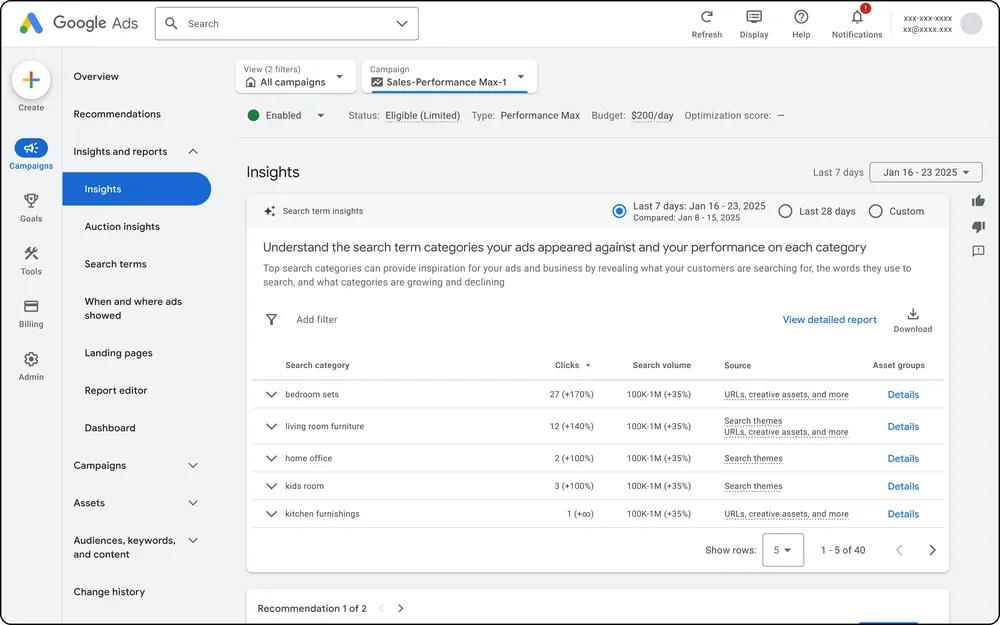
💡 Why it matters: Google finally listened! Performance Max has been a black box nightmare for many advertisers, and negative keywords at the campaign level is a huge step toward sanity. This won’t solve all the issues, but at least you can now prevent your luxury brand from showing up for “cheap” searches.
🚀 Takeaway: Immediately add campaign-level negative keywords to your PMax campaigns—start with brand competitors, irrelevant terms, and any keywords that historically waste budget. Use the new asset group reporting to identify which creative actually drives conversions, not just clicks.
Source: Google Ads Blog
2️⃣ Marketing Technology
Salesforce Completes Regrello Acquisition for Agentic AI
What Happened: On October 1, 2025, Salesforce completed acquisition of Regrello, an AI-native workflow automation platform, accelerating its “agentic enterprise” vision. Regrello transforms business data into autonomous workflows that integrate with Agentforce and Slack.

💡 Why it matters: Salesforce is going all-in on agentic AI—agents that don’t just recommend actions but actually execute them. This is the difference between a suggestion to “send an email to churning customers” and an AI agent that writes, personalizes, and sends those emails automatically. We’re entering the era of autonomous marketing ops.
🚀 Takeaway: If you’re on Salesforce, start preparing your data and workflows for AI agents. Clean up your CRM data, document your processes, and identify repetitive tasks that could be fully automated. The ROI here isn’t incremental—it’s transformational.
Source: Salesforce Newsroom
HubSpot Releases 100+ Product Updates Including AI Brand Voice
What Happened: HubSpot announced 100+ features in October 2025 including automation overview redesign, enhanced segment builder with real-time previews, customizable AI-powered brand voice and identity, improved video library interface, leads as standard CRM objects, Deal Insights CRM card, and 2,000+ apps in marketplace.
💡 Why it matters: HubSpot’s AI brand voice feature is a game-changer for consistency. Every piece of content—emails, social posts, landing pages—can now match your brand tone automatically. This solves the perennial problem of maintaining voice across teams and channels, especially as you scale.
🚀 Takeaway: Set up your brand voice parameters in HubSpot immediately. Feed it your best-performing content as examples, then test it across different content types. The real win is velocity—your team can produce 3x more content without sacrificing quality or consistency.
Source: HubSpot Community
Amplitude Launches AI Visibility Tool for LLM Brand Tracking
What Happened: On October 29, 2025, Amplitude introduced AI Visibility, the first major tool tracking brand presence in AI search platforms (ChatGPT, Claude, Google AI Overview). Provides visibility scores, competitive rankings, prompt/source analysis, and ROI tracking.
💡 Why it matters: You can’t optimize what you can’t measure. With 845M people using ChatGPT search, your brand either shows up in AI answers or it doesn’t—and until now, you had no way to know. Amplitude just created a new measurement category that every CMO will demand within 6 months.
🚀 Takeaway: Start tracking your AI visibility immediately. See which competitors dominate ChatGPT/Claude responses for your category keywords. Then reverse-engineer what makes their content more “citable” to AI models—usually it’s authoritative sources, clear data, and structured formatting.
Source: Amplitude Press Release
3️⃣ Social Media Marketing
Meta to Use AI Chatbot Interactions for Ad Targeting (Starting Dec 16)
What Happened: On October 1, 2025, Meta announced it will use interactions with Meta AI (used by 1 billion+ monthly users) to personalize content and ads across Facebook and Instagram starting December 16, 2025. For example, chatting about hiking could trigger ads for hiking boots—extending targeting into conversational AI contexts while excluding sensitive topics.
💡 Why it matters: Meta is mining conversational gold. When users ask Meta AI about their interests, problems, or plans, they’re revealing intent signals far richer than page likes or profile data. This is micro-moment targeting on steroids—catching people when they’re actively thinking about a category.
🚀 Takeaway: It is definitely a plus for advertisers, as your ads will now reach people based on conversations, not just behaviors. Test messaging that speaks directly to research-mode intent (“Still deciding on hiking gear? Here’s what experts recommend”) rather than just retargeting past behaviors. However, it is probable that it will create new red flags regarding privacy from the users and a reason for not using Meta AI and preferring the other AI chats, at least for privacy-aware European users.
Source: Meta Newsroom
YouTube Launches Brand Pulse Report with AI-Powered Unified Measurement
What Happened: YouTube introduced Brand Pulse Report on October 9, 2025, using first-of-its-kind multimodal AI to track brand presence across paid and organic video. Detects brand mentions via visuals (logos, products) and language (audio, titles).

💡 Why it matters: Finally, YouTube gives us proof of what we’ve suspected: paid advertising creates organic momentum. The Brand Pulse Report shows the full flywheel effect—your ads don’t just drive direct conversions; they spark organic discovery, reviews, and user-generated content. This justifies bigger YouTube budgets.
🚀 Takeaway: Request access to Brand Pulse Report immediately and measure your paid/organic interplay. Look for the multiplier effect: if $1 in paid spend generates 3x that in earned organic reach, you’re dramatically undervaluing YouTube’s true ROI.
Source: Google Ads & Commerce Blog
YouTube Q3 Revenue Hits Record $10.26B, Shorts Outpaces Long-Form
What Happened: Alphabet’s Q3 2025 earnings revealed YouTube advertising revenue reached $10.26 billion (first time crossing $10B in Q3), up 15% YoY. Critically, YouTube Shorts now earns more revenue per watch hour than long-form videos in the US—signaling a fundamental shift in content monetization and advertising strategy.
💡 Why it matters: Shorts out-earning long-form on a per-hour basis is the inflection point we’ve been watching for. This validates short-form as a serious advertising medium, not just a TikTok defensive play. Advertisers are finally paying premium rates for Shorts inventory.
🚀 Takeaway: Reallocate budget to YouTube Shorts if you haven’t already. The CPM efficiency has improved dramatically, and engagement rates often beat long-form. Create vertical, fast-paced creative specifically for Shorts—don’t just repurpose horizontal video.
Source: Alphabet Investor Relations: https://abc.xyz/investor/
4️⃣ GPTs & Emerging Tech
OpenAI Launches Apps in ChatGPT with New SDK
What Happened: On October 6, 2025, OpenAI introduced Apps in ChatGPT allowing third-party developers to build interactive experiences within chat conversations using new Apps SDK. First partners include Spotify, Zillow, Canva, and Coursera—making ChatGPT a distribution platform reaching 800M+ users.
💡 Why it matters: ChatGPT just became an app store with 800 million users. Brands can now build native experiences inside ChatGPT conversations—booking hotels, ordering products, designing content—without users ever leaving the chat. This is the conversational commerce platform we’ve been waiting for.
🚀 Takeaway: Evaluate whether your product/service belongs in ChatGPT. If users are already asking ChatGPT questions about your category, build an app to capture that intent directly. Early movers (Spotify, Zillow) are establishing category dominance in AI-native distribution.
Source: OpenAI Official
Anthropic Launches Claude Haiku 4.5, Makes It Free for All Users
What Happened: On October 15, 2025, Anthropic released Claude Haiku 4.5 matching Sonnet 4’s coding capabilities at one-third the cost ($1 vs $3 per million input tokens) and twice the speed. Strategic move to expand market share by offering “near-frontier intelligence” free to all claude.ai users.
💡 Why it matters: Anthropic is playing the long game—giving away premium AI to build market share and usage data. For marketers, this means you now have access to enterprise-grade AI for content generation, customer service, and data analysis at zero cost. The AI arms race is benefiting users.
🚀 Takeaway: Start using Claude Haiku 4.5 for AI tasks where speed matters: real-time customer chat, quick content generation, or high-volume data processing. At 2x the speed and 1/3 the cost, it’s perfect for use cases where you need volume, not maximum sophistication.
Source: Anthropic Official
Google Launches Gemini for Home, Replaces Google Assistant
What Happened: On October 1, 2025 (rollout began; Gemini voice launched October 28), Google began replacing Google Assistant with Gemini AI across smart speakers and displays, featuring 10 new natural voices, real-time contextual responses, and multi-turn conversation memory. Advanced features require Google Home Premium ($10/month).
💡 Why it matters: Voice commerce is finally getting the AI upgrade it needed. Gemini’s conversational abilities mean users can have natural shopping discussions (“What’s a good gift for a 10-year-old who likes science?”) instead of keyword commands. For brands, this opens sophisticated voice marketing opportunities. Personally, wondering when I will be able to have a smart assistant at my Alexa Home 🙂
🚀 Takeaway: Optimize your product data for voice search and conversational queries. Think about how people naturally ask questions about your category, not just what they type. Voice commerce will grow exponentially as Gemini makes interactions feel human, not robotic.
Source: Google Keyword Blog
Perplexity Strikes Multi-Year Licensing Deal with Getty Images
What Happened: On October 31, 2025, Perplexity AI announced global multi-year licensing agreement with Getty Images providing access to high-quality creative and editorial imagery with proper attribution and source linking across Perplexity’s AI-powered search tools.
💡 Why it matters: This is how the AI copyright wars get resolved—through licensing deals, not lawsuits. Perplexity is paying for content to avoid legal liability and improve quality. For content creators and brands, this validates that AI companies will pay for premium, verified content.
🚀 Takeaway: If you own valuable content (images, data, research), explore licensing opportunities with AI platforms. As AI search grows, platforms need authoritative, legal content sources. Your IP could be a revenue stream, not just a marketing asset.
Source: TechCrunch
🛠️ Tool of the Month: Amplitude AI Visibility
In a world where 845 million people use ChatGPT for search and Google AI Mode operates in 200+ countries, measuring your brand’s presence in AI-generated answers is no longer optional—it’s essential.
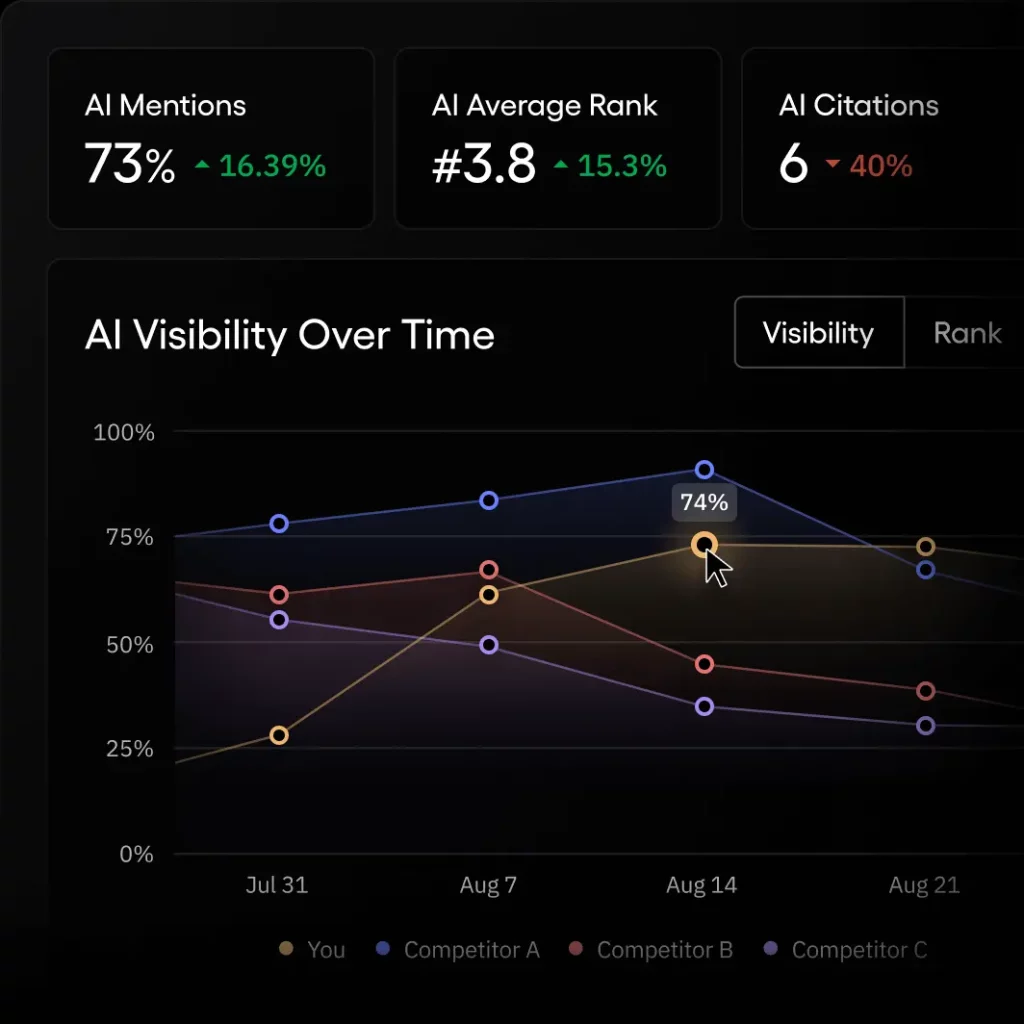
Amplitude AI Visibility (launched October 29, 2025) is the first major platform designed specifically to track how often your brand appears in AI search results across ChatGPT, Claude, Google AI Overview, and other LLMs. It provides:
- Visibility scores showing your brand mention frequency
- Competitive rankings comparing you to rivals in your category
- Prompt analysis revealing which queries trigger your brand mentions
- Source tracking showing which of your content pieces AI models cite
- ROI attribution connecting AI visibility to business outcomes
At Frizbit, we’re seeing AI search become a significant channel for discovery—especially in the travel and e-commerce verticals we serve. Brands that can’t measure their AI visibility are flying blind in what’s quickly becoming the second-largest search channel after Google.
Why now: With ChatGPT claiming 74.5% of AI search market share and Google aggressively rolling out AI Mode globally, traditional SEO metrics only tell half the story. If you’re not tracking AI citations, you’re missing where your next customers are searching.
Get started: Amplitude AI Visibility
✈️ News from Frizbit
World Aviation Festival 2025 – Lisbon
We had an incredible time at the World Aviation Festival 2025 in Lisbon this October! Our team showcased how airlines can recover lost revenue through intelligent marketing automation—transforming cart abandonment into confirmed bookings on auto-pilot mode.
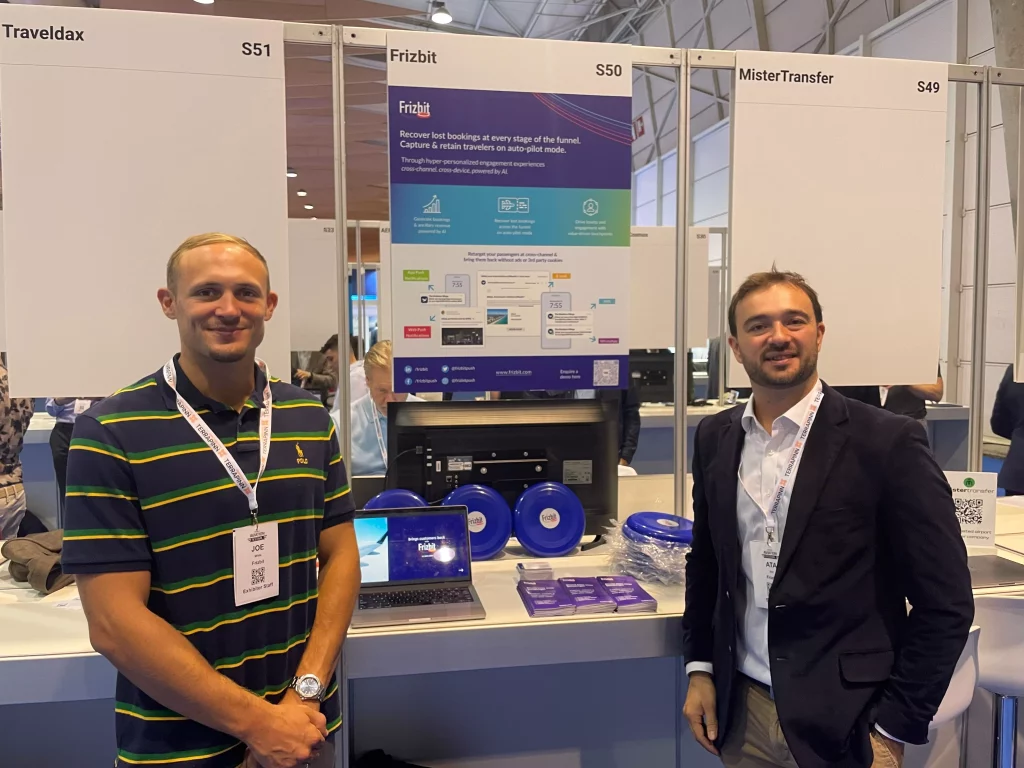
At the Startup Theater, our CEO Ata Gur presented “Digital Revenue Recovery: From Abandonment to Bookings on Marketing Auto-Pilot,” demonstrating how AI-powered web push notifications and personalized messaging can recover 15-20% of abandoned flight searches. Airlines are facing mounting pressure to maximize direct channel revenue while competing with OTAs, and our session highlighted practical automation strategies that leading carriers are using today.

The response from airline marketing teams was fantastic—we’re now in conversations with several international carriers about implementing automated recovery campaigns for their digital channels. If you missed us in Lisbon and want to learn how marketing automation can boost your airline’s direct bookings, reach out to our team.
Future Travel Festival – Barcelona
Our Co-founder & CEO Ata Gur also attended the Future Travel Festival right here in Barcelona, connecting with travel industry innovators and exploring how AI and automation are reshaping the entire travel ecosystem—from airlines, OTA’s, hotels to tour operators and destination marketing organizations.
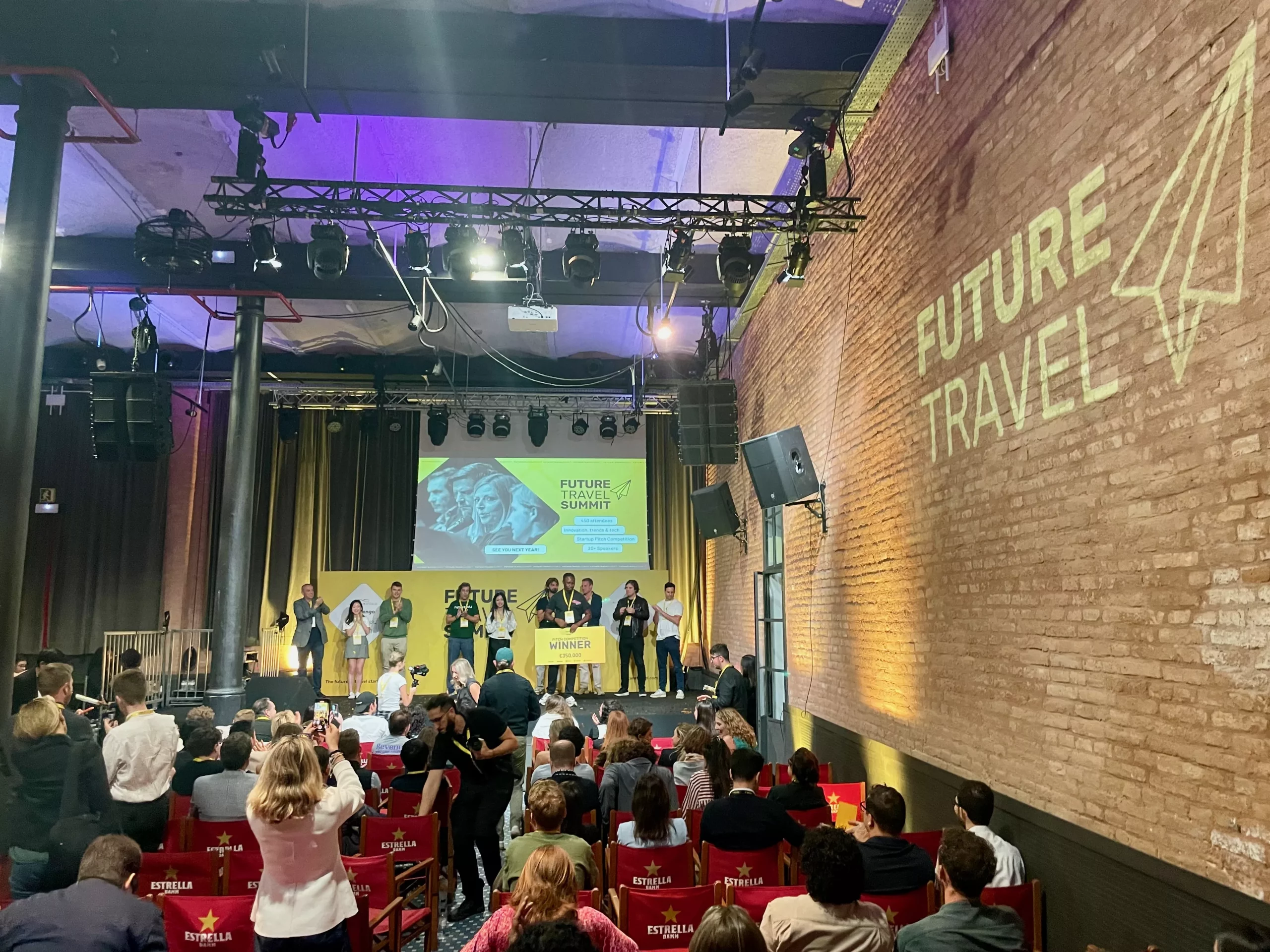
The festival reinforced what we’re seeing across our client base: travel brands that embrace marketing automation and AI-powered personalization. The future of travel marketing is real-time, contextual, and autonomous—and we’re excited to be building the infrastructure that powers it. It was a great organisation by Ana Metz and her team. She is the author of another great newsletter suggested for people in travel tech: https://futuretravel.com/
Stay tuned for more insights from both conferences in upcoming posts on our blog!
📅 Upcoming Dates: November 2025 Marketing Calendar
November 1 – Day of the Dead (Día de los Muertos) – Cultural marketing opportunity for brands in Latin America and Hispanic communities
November 11 – Singles’ Day (11.11) – Massive global shopping event, particularly in Asia; second only to Black Friday/Cyber Monday for e-commerce
November 27 – Thanksgiving (US) – Major shopping kickoff; expect email volume to spike 300%+
November 28 – Black Friday – The biggest retail day of the year; e-commerce brands should start promotions week prior
Pro tip: Don’t wait until Black Friday to launch promotions. Leading brands now run “Gray November” campaigns throughout the month, with escalating discounts building toward the Thanksgiving weekend. Adobe data shows 54.5% of holiday shopping revenue comes from smartphones—make sure your campaigns are mobile-first.
📩 Want to see how this could work for your brand? Book a free demo with Frizbit and let’s explore it together.

